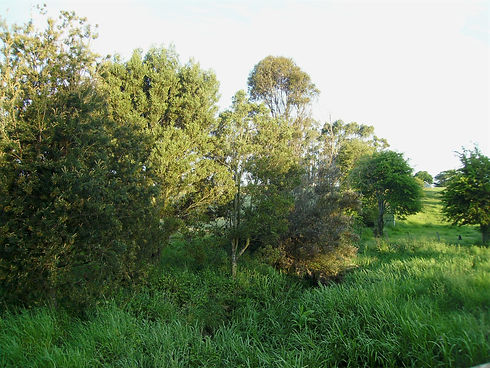RESTORING DEGRADED ENVIRONMENTS
These days, maintaining the environmental health of our lands is increasingly valued, however some past management practices have created significant land degradation. Some examples include:
-
Clearing of vegetation on steep slopes, leading to slump soils and erosion
-
Clearing of vegetation besides waterways, and allowing stock free access to waterways, leading to a decline in waterway health
-
Removal of sheltering vegetation from cropping or grazing paddocks, leading to loss of productivity and concerns for the welfare of grazing animals
-
Over grazing and soil compaction leading to unhealthy soils
-
Use of herbicides, pesticides and fertilizers that pollute and deplete our natural ecosystems.
Thankfully, many excellent resources are now available to landholders who wish to address these problems.
Cradle Coast NRM is a good starting point if you want to learn about sustainable agriculture; property planning for native vegetation, birds and threatened species; healthy soils ... and much more.
Bass Coast LandCare Network (Victoria) has several excellent, short videos on the basics of regenerative agriculture.

NATIVE SPECIES PLANTING AND SHELTER BELTS
Planting species native to the Kentish area provides habitat for many birds, animals and insects; shelter for domestic animals on farms, and for humans ... and the result is beautiful!
Native Plant Selection for Kentish [View PDF]
Shelter belts are particularly important for working farms. Why?
Establishing good shelter belts takes time and resources, but research shows that significant improvements in profitability and sustainability will follow.
Native Shelter Belts for North West Tasmania [View PDF]

SOILS
Looking for information on soils and farms? We highly recommend Soils Alive! [below] as the place to start. This resource, first published by DPIPWE in 2010, provides comprehensive, scientifically-based information on soils and ecosystems, and the importance of soil health to sustainable agriculture.
Slump soils are common in NW Tasmania. Find out how to identify them and how to manage them:

